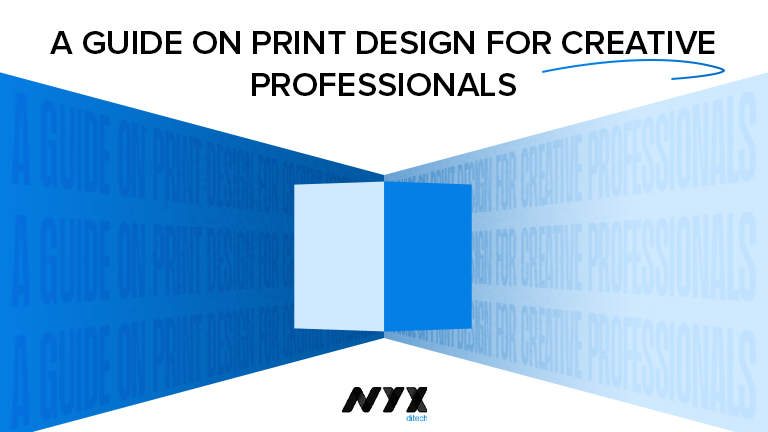A Guide on Print Design for Creative Professionals

Graphic designers are typically self-motivated individuals who prefer working alone and demonstrating their professional ingenuity with every piece of work. Since they are largely digital beings, it might be difficult for them to grasp the complexities of the actual world when they are so immersed in their own digital lives. Despite the continual attention paid to the digital work of a creative designer, print design services are just as critical to the success of a project.
Print Design vs. Digital Design
Digital and print media have many similarities. As a result, they both have the same motive: connecting with an audience. Print media, like digital media, follows the same design principles. However, print design is distinct from digital design in a number of fundamental ways as well. When it comes to print design, strict adherence to parameters and a focus on pixel-perfect perfection are essential skills.
This also raises another question: Is printing more expensive than designing digitally? Definitely. Errors in a digital design project may not result in additional costs to the client. However, reworking print design tasks costs a lot of money. While it’s possible to proofread and print off a design for printing before finalizing an order, there’s a limit to how much you can do.
Print designers must also be careful to work within clearly defined constraints, which may be both a blessing and a curse for them. When it comes to advertising, for example, there are limits on banner sizes or the number of words that may fit on a journal page. It is the responsibility of a print designer to be aware of these constraints at all times and to work intentionally to avoid making stupid mistakes in the design.
Things To Keep In Mind While Designing Print Media
Print Design Variations
Although the print design may be seen in almost every aspect of our daily lives, we tend to overlook it. To raise brand awareness of a company’s products or services, classic methods of advertising like print media are still used in business marketing. A well-designed fashion magazine can make or break a brand in the fashion business, while billboards are a great way to promote sports teams. Print is essential in every industry. A graphic designer should be familiar with the following types of print design, just to mention a few:
- Business collaterals
- Billboards and banners
- Signages
- Calendars and menu cards
- Merchandise and book cover designs
CMYK and RGB
Using a desktop application to generate color on the screen is not the same as using a printer. The RGB (red, green, and blue) color scheme is used in computer graphics. Printers, on the other hand, use the cyan, magenta, yellow, and black (CMYK) color set.
The RGB system provides a wider color gamut than most printers can generate. Your application must be set to RGB if your creations will only be used digitally. CMYK is required for printing purposes.
Resolution
Resolution may not be an issue when working digitally. High-resolution files are usually advised when it comes to printing so that you can get the best results. If you don’t utilize a high-resolution file, your print may seem pixelated, blurry, incomprehensible, and muddy.
The most critical unit of measurement for a designer is the DPI, or dots per inch. This measure, as its name implies, indicates the maximum number of dots that may be printed on a square inch of the printing surface. Ideally, the DPI should always be set at 300 dots.
Scaling
While your design may appear flawless on a computer screen, what if it had to be put on a billboard? Or, perhaps, on a small business card? No matter whatever setting you choose, using a pixel size that is the same size as your screen will not work.
Typography is also a crucial part of creative design services. In order to ensure that the writing on a business card is understandable, you should pick typefaces that are either large or strong. Readability and size should be considered at all times.
Bleed
Understanding that a printer may not have control over how paper is sliced is essential to print design. As a result, leaving gaps around the outside of your design makes perfect sense. This maintains a margin of safety. This additional area is referred to as a ‘bleed,’ and all reputable software includes recommendations indicating the start and end of a bleed. Your printer’s manual will inform you about how much bleed is required by your printer. Bleed needs vary from printer to printer.
Conclusion
Print design can be challenging, but we’ve covered a lot of ground here to give you some helpful hints. When it comes to creating something that’s going to be shared with the world, we understand that it might be intimidating. Therefore, make use of the suggestions discussed above in your future project. Contact Us today to learn more about print design of your brand
Read more about points to consider while building style guide of your brand here.

